Your gateway to endless inspiration
Fantasy - Blog Posts
Flow, Ghost, Infinity, Terra 1.1
Delyth Parks felt a small tremor, the vibrations growing in intensity every second. There were rarely earthquakes here and even when there were, they were small and insignificant, often ignored by the occupants of below.
“The here’s going on?” Jade Halsey appeared from around a corner, hair ruffled and hazel eyes blown wide. So it wasn’t just Dee who felt it. “Dunno, maybe the Titans are causing a ruckus downstairs,” Dee suggested sarcastically, her Irish accent making it seem even more so.
Jade rolled her eyes, “Your sarcasm is noted. Anyway, I sense it’s coming from the fountain.”
“What? I thought it was drained years ago.”
“My senses aren’t wrong, if it was the Titans, pretty sure it would have much weaker than this.”
Jade was right about the fountain being the source but there was something unusual about this particular earthquake(besides its abnormally strong intensity).
The closer they had gotten to the fountain, the weaker the vibrations became and it happened to be full of blood as it did long ago.
“Ok, this is getting weird,” Jade said and Dee noticed some bubbles appearing near the edge. Something was rising from it but what or who was it?
A tuft of hair appeared first then a face, arms, legs, and soon enough, there was an entire body floating in the blood fountain but whoever it was, they weren’t drenched in it. In fact, they looked perfectly dry.
The girls dragged the body out of the fountain, confirming it to be a boy in his teen years, possibly a tad younger than they were(looks-wise, at least), with brown hair tied into a ponytail and bangs covering his left eye.
Dee placed a hand on his chest and almost immediately retracted it in shock. “What’s wrong, Dee?” The redhead could only mutter four chilling words...
“He... he has a heartbeat.”
Let me talk Mythpunk

I know, I know, I did not do a lot of Punk'o Clock over the last few weeks, but I am trying to get back into it. So, let me talk about Mythpunk.
Mythpunk can be something very specific or very vague, depending on who you ask. Though I would argue that a lot of the stuff I originally have written with my novels and such could be considered Mythpunk.
The basical concept of Mythpunk is to take aspects from mythology and folklore and mixes them with modern storytelling techniques. But, let's be honest. Most of Mythpunk is just a splinter genre from Urban Fantasy. Yes, there is non-Urban Fantasy Mythpunk, but really, most of the genre is within the Urban Fantasy genre. It should be added that there are also stories that are considered Mythpunk that are more about the aesthethic of mythology, without going into real mythology.
While the term was originally coined by the author Catherynne M. Valente, I personally would argue that the best known stuff from the Genre is a lot of the things Neil Gaiman has written. American Gods in my view is very much Mythpunk. As is Good Omens.
But if you have followed this little series for a while, there is obviously the next question: Is it really punk?
Because... Well, I would argue that a lot of the stuff I have written (including my one published book) very much is Mythpunk - but looking at the genre in general I would argue that... a lot of Mythpunk does not really feature any punk themes.
To remind you, punk is in general about fighting a system that is bad for people. Be it for your own freedom - or the freedom and prosperity of the masses. I would argue that a story about finding community and working as a community also can qualify as punk.
Now, you can absolutely tell punk stories within a mythpunk framework. For example, take the gods as a metaphor for people who oppress people. Or take gods and myths and frame things like colonialism through that lense. It is absolutely possible. But I would argue that a lot of mythpunk does not really do that.
Which is kind of a pity. I think if you really go into mythology there is a lot of interesting stories you can tell.
One just has to try.





THE LAST UNICORN 1982, dir. Arthur Rankin Jr. and Jules Bass

Chapter 6 of RAKUL is UP !
Meiren returns to the Fortress of the Demons.
original dark fantasy romance; Mind The Tags, dark themes.
Follow me on Instagram
Do whatever the fuck you want with your art and body forever and ever, until you die.
Hi!!! I loved the fifth chapter of Rakul and the third chapter of Shimsiam. I'm so happy that you are writing them, and I'm always excited when I see you upload a new chapter 🥰 I was wondering what stories inspired you to start writing about demons. Can you recommend some? 👀
Hello and thank you so much for the Ask! While I can’t think of any one story that inspired my Demon original characters, in my notes from 1/31/22 just over one year ago, I reference a few movies as story and place inspirations: Maleficent, Legend (1985), and The Last Unicorn. I’d written a little over 1k of a story, inspired by the dark and romantic lyrics of the song “The Killing Moon”, about a demon Thrawn who finds a teenage girl, Elise (female Eli) in the forest, captures and seduces her, then takes her to the Black Fortress as an offering to the evil Demon King there (demon Emperor Palpatine), but in the last minute lets Elise escape from the rest of the demons and he is imprisoned. Elise helps him escape his prison cell, but she is severely injured and near death as he flies her away from the Fortress. So there are several elements of that story that DID end up becoming part of Rakul, but that specific story is one of my few truly abandoned ideas. And it was reborn into Rakul and the sequel to Rakul, which will feature demon Thrawn and demon Thrass, as well as Elise as female Eli once again (which is at least half written, but the exact ending point is undetermined at the moment). That sequel was begun on Feb. 2, 2022, and the first chapter of Rakul was begun Feb. 23, 2022 and published on AO3 2/25/22. Anyway, most of the inspiration for all of these stories was simply some dark song lyrics and a certain mood. I actually didn’t start reading a lot of romance novels until later in 2022, and I actually haven’t read any demon stories like mine before, so there isn’t any specific novel I could recommend that inspired my demons unfortunately.
Finally, there IS a very lovely romantic fanfic about demon!Thrawn and human Eli already on AO3:

Chapters 4 & 5 of my original dark fantasy story Rakul are UP.
The Demon King lets the girl sacrificed to him go…
but expects that she will return to him.
Content Warning: non-consent & dark themes, mind the tags.
Follow me on Twitter and Instagram

Chapter 3 of Rakul is up! Mind The Tags.
https://archiveofourown.org/works/37363276/chapters/93232891

Chapter 2 of Rakul is UP
[ CONTENT WARNING: NONCON ]
https://archiveofourown.org/works/37363276/chapters/93232891

Chapter 2 of Rakul is UP
[ CONTENT WARNING: NONCON ]
https://archiveofourown.org/works/37363276/chapters/93232891

Here's a redraw of an old D&D character I made

If anyone is interested please check it out.
People need to make more fantasy worlds based on weird manifolds, we have so many disk worlds and sphere worlds and torus worlds, I want an RP^2 world where you set out to find the edge and come back with the opposite orientation

Down in the dungeon, where hunger resides 🩸
I wanted to make a dungeon meshi fanart for a while, and man, I love Falin, so here we go
I hope you like it :)
the feminine urge to create a magic system for something you’ll never write
Princess Tutu and Grand Narrative

Once upon a time, there was a clumsy school girl granted the power to transform into the magical ballerina Princess Tutu.
“Once upon a time” is a familiar phrase used to connect stories that take place in lands distant and times different from one another into the same fairytale world. Each episode of the anime Princess Tutu begins with this familiar phrase and then proceeds to tell a story both known and new, where Hans Christian Anderson’s Ugly Ducking becomes Odette, the Swan Queen, from Swan Lake, thanks to the magic of the mysterious Drosselmeyer, who bares a striking resemblance to the character of the same name from The Nutcracker. Princess Tutu is not just a retelling of a handful of fairy tales, it’s an adaptation of stories across literature, ballet, opera, and of course, anime. Each piece of Princess Tutu’s narrative belongs to worlds larger than its own. The series challenges paradigms about typical narrative creation by weaving together multiple “grand narratives”.
While working as an editor for Kadokawa Shoten in the late 80s, Otsuka Eiji wrote a paper called “World and Variation: The Reproduction and Consumption of Narrative” in which he explains the idea of the grand narrative. An individual story only gives the audience a small glimpse into that wider world that the story is set in. This wider world is full of countless narratives told from countless perspectives that make up the grand narrative. Eiji uses the Gundam franchise to illustrate this concept where any given episode of the anime is a small snapshot of narrative within the larger universe(s) Gundam takes place in. Eiji explains, “Countless other [stories] could exist if someone else were the main character.”
Everyone is the main character of their own story. But most of these stories that make up the grand narrative of a world are hidden from view. It’s impossible to tell every story at once and have it be comprehensible. Instead we can only consume small bite-sized narratives that give us a snapshot of the (hopefully) interesting parts of a protagonist’s life. But who, exactly, is controlling these smaller narratives? This is a question faced by the characters of Princess Tutu.
The concept of shifting protagonists and expanding the audience’s view into the grand narrative heavily ties into Princess Tutu’s premise. The anime’s story is catalyzed by Drosselmeyer, the author of a fictitious book called The Prince and The Raven. The book’s ending is a stalemate between the titular characters so Drosselmeyer decides to promote the minor character of Princess Tutu to the role of main character to help the story move forward.
As you can probably tell by the name, Princess Tutu is heavily influenced by ballet. One of the show’s more significant influences is Swan Lake. Through the anime’s re-purposing of Swan Lake’s Odette as a magical girl, Princess Tutu continues to uphold ballet’s tradition of adapting the story for its own purposes.

Princess Tutu and Odette
The basic story of Swan Lake is about a prince falling in love with a girl cursed to be a swan from sunrise to sunset by an evil sorcerer. The sorcerer tricks the prince into confessing his love for his daughter, Odile, instead of the swan girl thus dooming the swan girl’s chance at true love and breaking the curse.
Amanda Kennell, an American scholar, outlines in her paper “Origin and Ownership from Ballet to Anime” Swan Lake’s production history and the evolution of the ballet’s narrative. The original staging in 1877 had the story end with the villain going unpunished and the two lovers drowning in a flood. In a revival staging from 1895 the villain was defeated and the two lovers reunited in heaven after throwing themselves into a lake. In a single scene production called The Magic Swan from the 1940s, the iconic “black swan” was introduced setting the precedent for the same ballerina to play the role of Odette and Odile in striking white and black costumes. And finally, another staging in 2006, not only adopted the White and Black Swan motif, but also changed the ending once again so that the prince kills the villain and he and Odette live happily ever after.
Despite each staging of the classic having significant differences, none of the variations are cast away as counterfeits. The value of the production isn’t in how close it is to the original Swan Lake but instead in the relative merit of each variation. In fact, it doesn’t really matter which you consider “the original” where the additions made by each carry their own merit and add to Swan Lake’s grand narrative. In this same regard, it would be acceptable to consider Princess Tutu another variation on the world of Swan Lake’s grand narrative.
There is terminology for this phenomenon in Kabuki theater. Eiji points out in his paper the similarities between the concepts of Sekai (world) and Shukou (plot) from Kabuki theater and his ideas of the grand narrative and the smaller narratives.
In Kabuki, Sekai represents the world a story takes place in and Shukou represents the story that is a product of that world. Each staging of a Kabuki play is its own Shukou derived from either a single Sekai or the mixing of Sekai. What matters in creating a good performance is not necessarily conveying the Sekai but instead the relative merit of the Shukou’s take on things. No performance is exactly the same and different actors bring different strengths to a performance and in turn provide a different experience for the audience’s entertainment. This of course carries over to more art forms than just Kabuki, classic ballet is in a similar position where entire songs are sometimes re-choreographed just to match the strengths of an individual ballerina. Ballet in particular has a long tradition of making minor and major changes to suit an individual performance. Whether it be tweaking choreography or straight up giving the story a different ending. The evolution of Swan Lake’s production is an excellent example of how productions of what are considered to be the same story can dramatically vary.
But Princess Tutu borrows from more stories than just Swan Lake. This brings us back to Kabuki and the idea of mixing Sekai in order to create another Shukou.
Princess Tutu takes pieces of classic stories and rearranges them to create something simultaneously familiar and completely new. Princess Tutu is not forging a new Shukou from only Swan Lake’s Sekai, but instead is connecting the canon of European literature and performing arts together into an even more extensive grand narrative.
Just look at the series’ opening for example, where Swan Lake and The Nutcracker are intertwined with one another as the anime’s titular character is dressed in the ballet costume of Odette and dances to The Nutcracker’s Flower Waltz to simultaneously combine the worlds of two ballets while producing an entirely new moment unique to the Princess Tutu anime.
The anime ends on the implication that if one person tries to control a story and the grand narrative it’s connected to, that person will fail. Princess Tutu is an excellent reminder of how stories are dynamic. Stories end up taking on a life of their own evolving, expanding and being reworked by both creators and consumers.
Eiji explains that once the consumers feel they have a grasp on the grand narrative they are free to produce their own small narratives from it. This is exactly how its creators forged Princess Tutu from the grand narrative of classic literature and performing arts. Just as mangaka can’t help it if a doujinshi adds to the narrative of their original story, Travosky can’t control the new life his ballets have taken on in Princess Tutu. Stories will take on a life of their own, abandon the need for an original and become a part to a larger grand narrative to be consumed and reworked over and over.
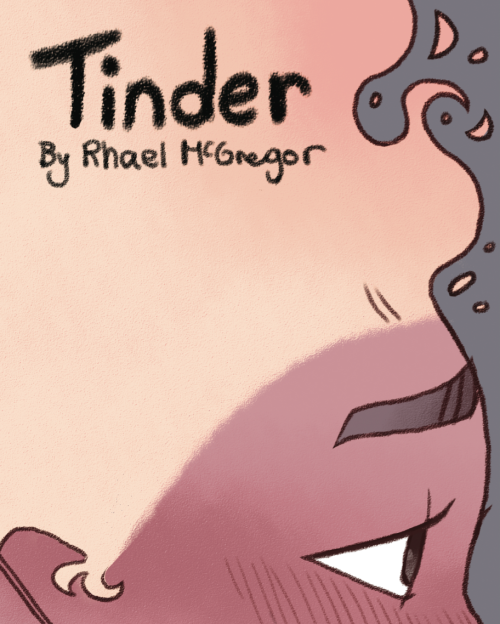
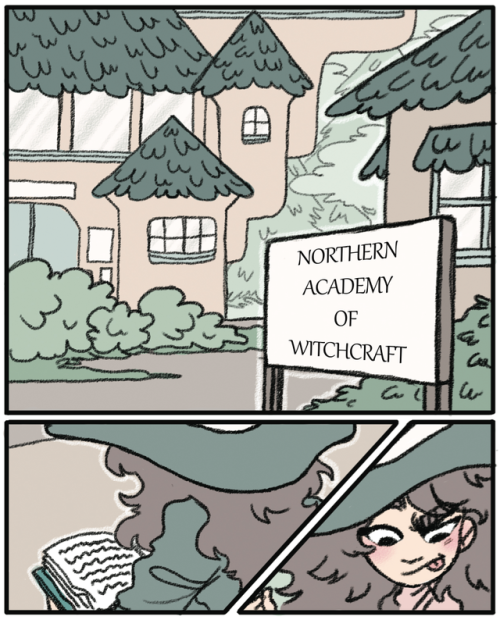
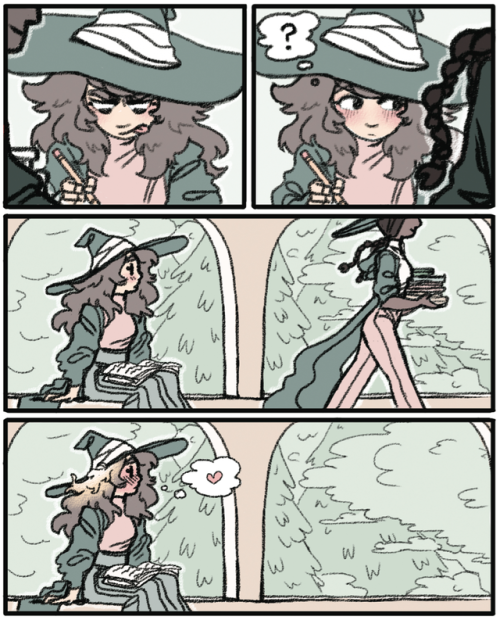
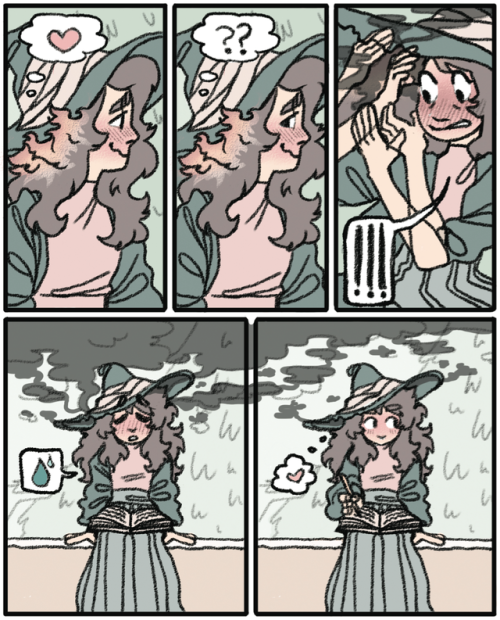
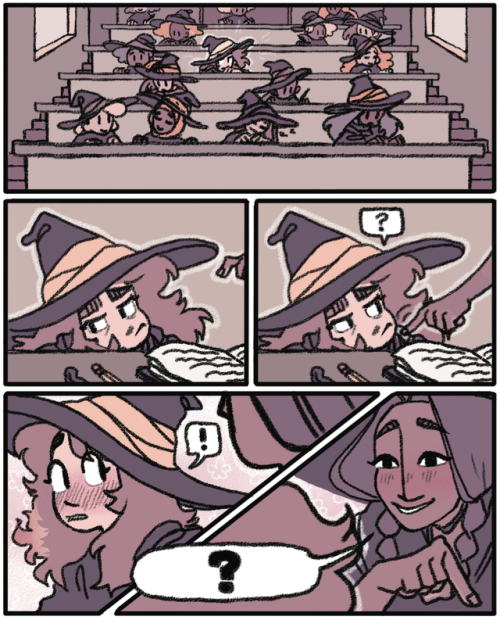
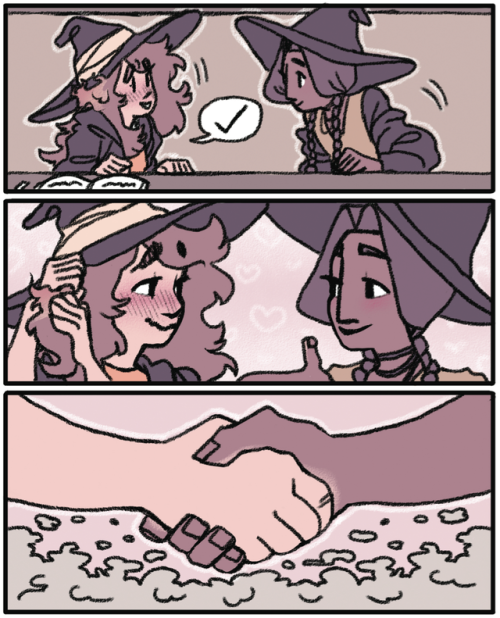
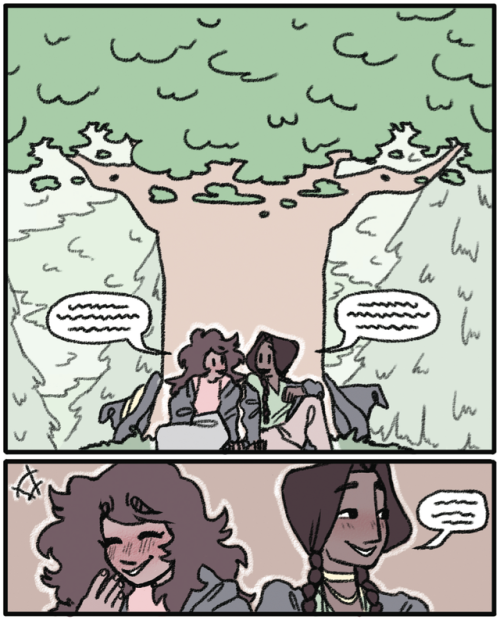
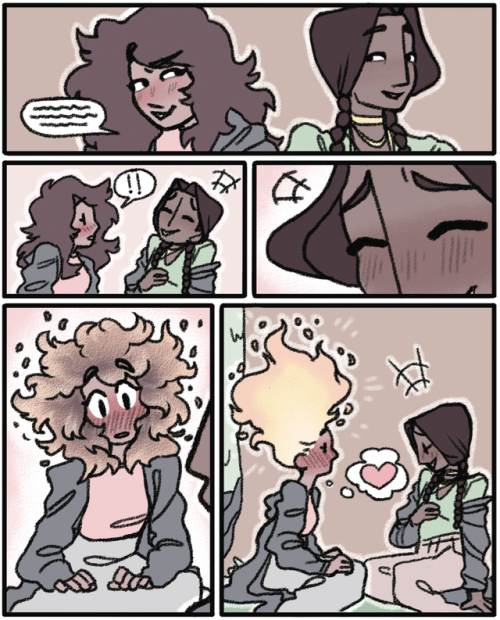
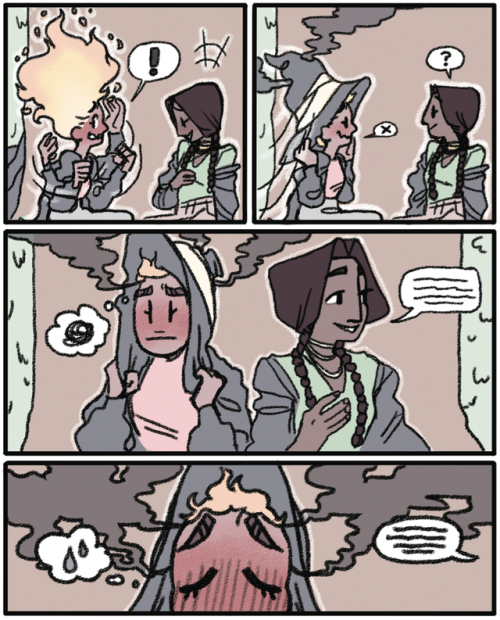
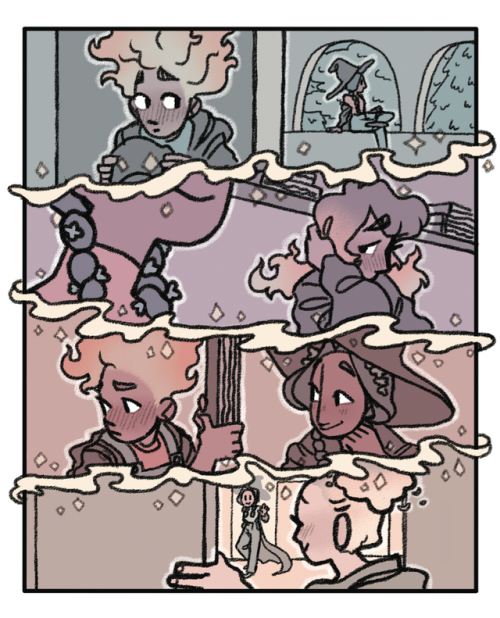







At long last I’m excited to share my comic ‘Tinder’! I had so much fun on this project and it got me really excited to write more stories! I sincerely hope you enjoyed the comic and have a great day! <3
If you want to help support the comic you can help by: ~ !! Reblogging this post !! ( a big please and thank you! <3) ~ Give the comic an ‘ol follow over on Tapas
Or if you have some extra cash you’re welcome to: ~ Buy a digital copy of the comic ~ Buy a physical copy of the comic ~ Support me on Kofi

These are my two OCs Yishu, Guardian of Creation (former Crea) and Edward, Guardian of Destruction (former Decay).
They are currently walking through Ed's dead forest.
I imagined te scene just like this in my head and just drew it. That was satisfying ... and I suck at backgrounds but for a full illustration this looks pretty good.
(I looooove how Yishu looks. She doesn't give a care in the world walking through a scary forest.)

Found this little goober while looking through my sketchbook.

-insert description here- Edit: THIS IS OLD AF SCROLL BACK UP 😠😠😠

Oberon & Titania by Arthur Rackham
I’m sorry I ruined your life and pillaged your village, ok?? That’s just how I flirt
Remember when everyone was like Mmmm futuristic dystopias with real world parallels and now we’re all like damnnnnn in depth fantasy worlds with corrupt caste systems and the only consistent thread is that the government ain’t shit

Working on a little redesign for my baby for artfight this year!! (Add me! I’m Jamsijn_ on there!)
Delzoun "Tide-Me-Overs"

“While these are customary consumables at Hornmoot, the traditional human-dwarven trading festival that marks the dawn of Spring, there isn’t a holiday on the eventful dwarven calendar that doesn’t feature these scrumptious meats on the menu.” - Heroes’ Feast, p. 90
Personally, you’d be hard-pressed to find a more dwarven food than the good old-fashioned meatball.
Heroes’ Feast’s Delzoun “Tide-Me-Overs” bring dwarven kitchens to life with these extremely tasty and juicy meatballs! Leagues better than anything you’d buy at the grocery store, I would absolutely suggest making these yourself.
This recipe is also ridiculously forgiving. Once, I doubled nearly all the ingredients by accident, aside from the meat, and they still came out amazing!
If you don’t eat pork, no worries! They’re just as tasty using only beef!
Check out below for tips and tricks when making this yourself! Get Heroes’ Feast here: https://dnd.wizards.com/heroes-feast
Prep: 15 mins Cook: 1h 30 mins Total: 1h 45 mins

Ingredients:
¼ cup (60 ml) heavy cream*
1 egg
2 slices dark bread (such as rye), crusts discharged, remainder torn into pieces**
3 tbsp. (43 g) unsalted butter
1 small onion, finely chopped
Kosher salt
¼ tsp. (2 g) ground allspice
8 oz (225 g) ground pork
8 oz (225 g) lean ground beef
Freshly ground black pepper
2 tbsp. (8 g) all-purpose flour
1 ½ cups (350 ml) low-sodium chicken broth
1 tsp. (4 g) light brown sugar
1 ½ tsp. (7 ml) soy sauce
½ tsp. (2 ml) fresh lemon juice
3 tbsp. (12 g) finely chopped fresh dill or parsley
* I’ve used both heavy cream and half-and-half with no issues.
** I used Vienna-style Pumpernickel Bread, cut into standard ½ -inch sandwich slices at the thickest part of the loaf.

In a large bowl, whisk together the cream and egg (top-left).
Add the bread, mix well, and set aside, stirring occasionally, until the bread is softened, about 20 minutes (top-right).
Using a fork or sturdy spoon, mash the bread into a paste and set aside (bottom).
NOTE: Apparently, the bread is not what binds the meat/other ingredients together, but works with the milk to give the meatballs moisture and texture! The eggs are the only binding ingredient.
In hindsight, this makes sense, since in baking eggs are a binder…

Meanwhile, in a skillet over medium heat, melt 1 tbsp. (14 g) of the butter. Add the onion and ½ tsp. (3 g) salt and cook, stirring, until softened, about 4 minutes (left).
Add the allspice and cook, stirring, until fragrant, about 40 seconds (right).
Remove from heat and let them cool to room temperature. Laying mine in a single layer in the skillet, it took about 10 minutes.
TIP: Don’t be afraid to eat some of the onions to see if they’ve softened enough.
TIP: Cooling my onions in a single layer in the skillet took about 10 minutes.

Preheat the oven to 475℉ (245℃) with a wire rack in the middle of the oven. Coat a large wire rack with nonstick cooking spray and set it in a large, rimmed baking sheet.
Add the cooled onion mixture, pork, ground beef, baking powder, 1 tsp. (5 g) salt and ½ tsp. (1 g) pepper to the bread paste and, using a large spoon or your hands, mix until well combined and uniform.
TIP: To save yourself time when doing the dishes, line the baking sheet with aluminum foil so you don’t need to scrape any burned bits off.
NOTE: Personally, I didn’t run into this problem while making mine, but it’s important to only mix the meat mixture until everything is just combined. Overmixing will result in stiffer, tougher meatballs.

With moistened hands, form the mixture into generous 1-tablespoon-sized balls (left).
Arrange the meatballs on the rack in the baking sheet and bake until lightly browned, about 20 minutes, rotating the pan halfway through (right).
NOTE: I had to make double the amount of pork/beef meatballs since 8 oz packages of each ground meat were not available. Expect about half the amount of meatballs that you see here if making this yourself.
NOTE: The meatballs will sag through the wire rack a little bit when placed, this is fine!
NOTE: The ones shown above are the size Heroes’ Feast recommends. I wanted them to be a little bit larger the second time I made them, so I went for golf-ball sized. The cooking time stayed the same, but I found the weight of them might have been a bit too much and they lost way more structure than the smaller ones.
However, that was also the time I accidentally doubled all the ingredients aside from the meat, so I’m sure there was more at play there. Just something to keep in mind. They still came out great though! In fact, they’re the ones shown in the final picture.

Wipe out the skillet used for the onions to remove any stray onion bits, set it over medium heat, and melt the remaining 2 tbsp. (28 g) butter. Stirring constantly, cook until fragrant and a shade darker, 1 to 2 minutes.
Add flour and cook, stirring constantly, until golden, 2 to 3 minutes (top-left).
Switch to a whisk and, whisking constantly, gradually add the broth. Continuing to whisk often, cook for about 2 minutes (top-right).
Add the brown sugar, soy sauce, lemon juice, and ¼ tsp. (0.5 g) pepper and continue to whisk and cook until thickened, about 2 more minutes (bottom).
NOTE: The Heroes’ Feast “cook’s notes” mentions that the sauce will thicken quickly as it cools, and to add extra chicken broth to loosen the consistency.
They’re absolutely right! It’s more obvious in the next pictures but the sauce thickens a lot. It’s also a lot darker than what’s shown in the preview image in the book, so I’m not sure how much extra broth they had to add, but it seems like quite a bit.

Add meatballs to the sauce and simmer, stirring occasionally, until heated through, about 4 minutes (left).
Stir in most of the dill or parsley and taste and adjust the seasoning with additional salt and pepper, if necessary (right).
Transfer to a serving dish, sprinkle with remaining dill or parsley, and serve hot.

Overall, I would give this recipe a 5/5. It was a little daunting since the ingredients list was so long, but once I got started making the meatballs it was actually remarkably simple! They’re really juicy, have great texture, and the allspice-seasoned onions are so tasty!
The sauce is a little awkward to make, but it does add amazing flavour. But, again, the meatballs retained so much moisture you don’t really need a sauce to enjoy them!
Honestly, if you have the time and are sick of store-bought meatballs, definitely give these a try.
Finally, as I mentioned earlier, you can totally make these with only beef (shown in the final picture above)! They’ll still retain quite a bit of moisture and be super delicious.
Stuffed Egg-Battered Toast

“There’s nothing more comforting to a comfort-obsessed halfling than the warm intermingling scents of vanilla, maple, and walnuts filling their home.” - Heroes’ Feast, p. 120
French toast is a staple of Sunday Brunches everywhere, and it’s easy to see why. This fried breakfast bread is easily customized with whatever you want. Syrup? Eggs? Fruit? It’s all fair game to this tasty toast!
Taking a swing at its own version, Heroes’ Feast’s Stuffed Egg-Battered Toast looks to change it up by putting its toppings inside, rather than on top.
With each slice stuffed with mascarpone, walnuts, and a truly questionable amount of vanilla extract, your kitchen and taste buds are surely going to be treated to that homely vanilla smell that halflings crave so much.
Check out below for my notes on the results and for tips and tricks when making this yourself! Get Heroes’ Feast here: https://dnd.wizards.com/heroes-feast
Prep: 5 mins Cook: 25 mins Total: 30 mins

Ingredients:
4 ounces (½ cup, 120 g) mascarpone, at room temperature
¼ cup (25 g) walnuts, finely chopped
2 tsp. (10 ml) pure vanilla extract*
4 (1-inch-thick) slices of brioche or challah
2 eggs
½ cup (120 ml) whole milk
¼ tsp. (2 g) kosher salt
2 tbsp. (30 g) unsalted butter
½ cup (120 ml) maple syrup
Confectioners’ sugar for dusting**
* That uh… sure is an amount of vanilla for a ½ cup of mascarpone.
** I used chopped strawberries instead.

In a small bowl, stir together the mascarpone, walnuts and vanilla. (I forgot to take a picture of this each time I made it. L.)
Use a thin knife to cut a 2-inch-long slit through the side of each slice of brioche, creating a pocket.
Gently open the pocket and spoon 1 tbsp. of the mascarpone mixture into each slice.
TIP: As mentioned in the “cook’s notes” section, the bread is very delicate and tears easily- so take extra caution when opening and stuffing the pockets.
Alternatively, the notes mention that you could use ½-inch slices and spread the mixture between them like a sandwich. However, I worry about its structural integrity while dipping it in the egg mixture or flipping it in the frying pan.
But, since stuffing each slice is a pain, it might be worth going with the sandwich method.
NOTE: Only stuff the slices if they’re cut 1-inch-thick. ½-inch and even ¾-inch slices are way too thin and will tear.

In a pie dish or shallow bowl, whisk together the eggs, milk, and salt.

BEFORE DIPPING the slices, melt 1 tbsp. butter in a large skillet over medium heat.
Dip two stuffed slices into the egg mixture, turning to soak both sides and letting any excess batter drip back into the bowl.
TIP: You only need to let each side soak for a few seconds. Any longer than 5 makes the bread mushy.

Place the sides in a skillet and cook for 2-3 minutes per side, until golden brown. Use a spatula to transfer the toasts to a warm plate.
Repeat to cook the remaining two stuffed slices.
Meanwhile, warm the maple syrup in a small saucepan over low heat for a few minutes.
TIP: The “cook’s notes” section mentions that warmed marmalade can be used to replace the maple syrup.
NOTE: I misread the instructions for this step and cooked all four slices at once. To fix the uneven browning, I flipped the lighter parts to the middle of the pan for about 20 seconds after cooking each side.
NOTE: To save on dishes, I chose to not warm my syrup.

Top the toast with strawberries (and/or confectioners’ sugar), drizzle with the maple syrup, and serve.
Overall, this recipe has one thing really working against it: the vanilla extract.
Personally, I found the filling to be inedible with 2 tsp. of vanilla extract in the mascarpone mixture. The alcohol in the extract doesn’t have enough time to cook out and leaves everything with a distinctly alcoholic taste.
This would be fine if other flavours used in the recipe complimented the taste of the alcohol or if the taste was expected (like an alcoholic french toast). Unfortunately, nothing here works with it and, being a breakfast food, it isn’t expected. So, it ends up overwhelming the toast and making it unappetizing.
My solution to this was to cut back the vanilla extract to ½ tsp. The taste was still a little strong, but there was an improvement. If you’re planning to make this at home, consider cutting the vanilla back even further, or try using vanilla bean instead to skip the alcohol entirely.
It’s also worth mentioning that the mascarpone makes these very rich. Interestingly, I found that the syrup and strawberries really helped cut the richness. You’re still only going to eat one though.
Finally, as mentioned in a previous step, although the structural integrity might be questionable with the sandwich method, it might be worth it just to skip spooning the mixture into the pockets. The mess it creates really makes you wonder if it’s worth it.
All in all, the unaltered recipe gets a 2.5/5, going up to 4/5 when the amount of vanilla extract is reduced. Still losing points for the remaining alcoholic taste and messy and needlessly difficult construction.





